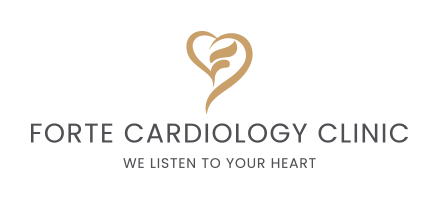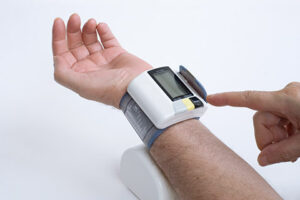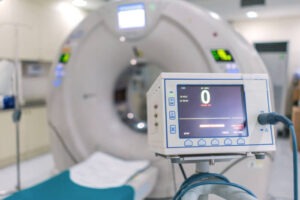CT Coronary Angiogram offers a window into the network of coronary arteries. This non-invasive imaging technique utilises advanced technology to capture detailed, three-dimensional images of the heart’s blood vessels. Learn how this innovative method revolutionises the understanding and assessment of cardiovascular health.
What is a CT Coronary Angiogram?
Defining CT Coronary Angiogram
A CT Coronary Angiogram is a sophisticated diagnostic procedure designed to visualise the coronary arteries, the blood vessels supplying the heart muscle. Unlike traditional angiography that involves invasive catheterisation, this non-invasive imaging technique employs advanced computed tomography (CT) technology to capture detailed, three-dimensional images of the coronary arteries. The primary purpose of a CT Coronary Angiogram is to assess the patency, health, and potential blockages in these vital blood vessels.
How CT Coronary Angiogram Works
The procedure utilises advanced CT scanners to obtain high-resolution images of the heart and its surrounding structures. Contrast dye is typically administered intravenously to enhance the visibility of blood vessels during imaging. X-ray images are captured from different angles as the patient lies on the CT scanner table.
These images are then reconstructed into detailed, cross-sectional views of the coronary arteries, providing a comprehensive visualisation of the heart’s blood supply. The result is a precise and detailed map, allowing healthcare professionals to assess the presence of any narrowing, blockages, or abnormalities in the coronary arteries.
Indications for CT Coronary Angiogram
CT Coronary Angiogram is particularly beneficial in various clinical scenarios:
Detecting Coronary Artery Disease (CAD) – It is extremely effective in identifying and evaluating the extent of coronary artery disease, providing crucial information for treatment planning.
Assessing Chest Pain Causes – When individuals present with chest pain, a CT Coronary Angiogram helps assess the potential causes, ruling out or confirming issues related to the coronary arteries.
Preoperative Planning – Before certain heart surgeries or interventions, a CT Coronary Angiogram may be utilised for preoperative planning, offering detailed insights into the coronary anatomy.
Screening for High-Risk Populations – In some cases, it is employed as a screening tool for individuals at higher risk of coronary artery disease, allowing for early detection and preventive measures.
The CT Coronary Angiogram Procedure
Patient Preparation
Before undergoing a CT Coronary Angiogram, individuals are guided through a series of preparation steps to ensure a smooth and effective procedure. These preparations typically include:
Fasting Instructions
Depending on the specific instructions from the healthcare provider, individuals may be advised to fast for a certain period before the test.
Medication Guidance
Guidance on whether to continue or temporarily stop certain medications, especially those that may interfere with the procedure or the use of contrast dye.
Medical History Review
A thorough review of medical history, including allergies and previous reactions to contrast agents, to ensure the safety of the procedure.
Clothing and Accessories
Instructions on wearing comfortable clothing and removing metal objects or accessories that may interfere with imaging.
Contrast Injection and Imaging
The CT Coronary Angiogram involves the injection of a contrast dye (iodine-based) into a vein, usually in the arm. This contrast dye helps enhance the visibility of blood vessels during imaging, allowing for more detailed and accurate results. The injection is typically done using an automatic injector to ensure precise timing.
Once the contrast is administered, individuals are positioned on the CT scanner table. The scanner, equipped with advanced technology, captures a series of X-ray images from different angles. A computer then processes these images to create detailed, cross-sectional views of the coronary arteries. The entire imaging process is conducted in a controlled environment to ensure the accuracy and clarity of the results.
Duration of the Procedure
One of the notable advantages of a CT Coronary Angiogram is its relatively quick and non-invasive nature. The procedure typically takes 15 to 30 minutes, making it a convenient diagnostic option. As there is no need for catheterisation or recovery time, individuals can often resume their normal activities immediately after the procedure. The efficiency of CT Coronary Angiogram contributes to its widespread acceptance and accessibility as a valuable tool in cardiovascular diagnostics.
Interpreting CT Coronary Angiogram Results
Analysing Images
Healthcare professionals interpret CT Coronary Angiogram results by carefully analysing the detailed images of the coronary arteries. These images, created through advanced computer processing of X-ray data, provide a clear and comprehensive view of the heart’s blood vessels. The analysis involves assessing the arteries’ size, shape, and patency, as well as identifying any potential abnormalities, plaques, or blockages.
Identifying Normal vs. Abnormal Findings
Distinguishing between normal and abnormal findings is crucial to CT Coronary Angiogram interpretation. Normal findings would include clear and unobstructed coronary arteries with smooth vessel walls. Abnormalities may manifest as:
Arterial Narrowing
Identifying areas where the arteries have narrowed due to plaque buildup, potentially restricting blood flow to the heart muscle.
Atherosclerotic Plaques
Detecting the presence of atherosclerotic plaque fatty deposits on the arterial walls that can lead to blockages.
Calcifications
Highlighting calcifications within the arteries, as they may indicate the presence of hardened plaque.
Anomalies of Aberrations
Noting any structural anomalies or aberrations in the coronary arteries that could impact blood flow.
Diagnostic Value
CT Coronary Angiogram offers substantial diagnostic value by providing a comprehensive view of the heart’s blood vessels. The detailed imaging allows healthcare professionals to:
Diagnose Coronary Artery Disease (CAD)
Identify coronary artery disease’s presence, location, and severity, assisting in treatment planning.
Assess Cardiovascular Risk
Evaluate an individual’s cardiovascular risk by identifying early signs of arterial abnormalities.
Preoperative Planning
Aid in preoperative planning for specific heart procedures or surgeries by providing detailed information about the coronary anatomy.
Guide Treatment Decisions
Assist in guiding treatment decisions, such as the need for medication, lifestyle modifications, or interventions like angioplasty or stent placement.
Benefits of CT Coronary Angiograms
By emphasising these benefits, CT Coronary Angiograms emerge as a valuable and patient-friendly diagnostic tool in cardiovascular assessments. Combining non-invasiveness and comprehensive visualisation enhances their role in modern cardiac diagnostics and treatment planning.
Non-Invasiveness
One of the key benefits of CT Coronary Angiograms is their non-invasive nature. Unlike traditional angiograms that involve invasive catheterisation, CT Coronary Angiograms require no insertion of catheters into blood vessels. Instead, the procedure utilises advanced CT technology to obtain detailed images of the coronary arteries. This non-invasive approach significantly reduces the associated risks and discomfort, providing a more patient-friendly experience.
Comprehensive Visualization
CT Coronary Angiograms offer a unique advantage in comprehensively visualising the heart’s anatomy. The detailed images generated through advanced computer processing offer a three-dimensional map of the coronary arteries, highlighting their size, shape, and patency. This level of detail allows healthcare professionals to assess the entire coronary vascular system, identifying potential blockages, arterial narrowing, or other abnormalities. The comprehensive nature of the visualisation contributes to accurate diagnoses and informed treatment decisions.
Key Advantages
Reduced Risks – The non-invasive nature of CT Coronary Angiograms reduces the risks associated with invasive procedures, making it a safer option for individuals.
Enhanced Patient Comfort – With no need for catheter insertion, patients experience less discomfort and can resume normal activities immediately after the procedure.
Detailed Anatomic Information – The comprehensive visualisation provides detailed anatomic information, enabling healthcare professionals to assess the coronary arteries precisely.
Time Efficiency – CT Coronary Angiograms are relatively quick, offering efficient results without the need for extended hospital stays or recovery periods.











